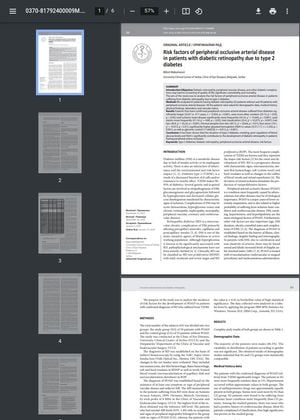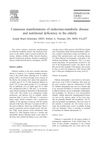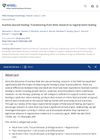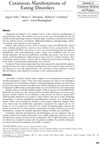Risk Factors of Peripheral Occlusive Arterial Disease in Patients with Diabetic Retinopathy Due to Type 2 Diabetes
January 2024
in “
Srpski arhiv za celokupno lekarstvo
”

TLDR Long-term diabetes, smoking, and poor blood sugar control increase the risk of artery disease in diabetic retinopathy patients.
The study analyzed 63 patients with diabetic retinopathy due to type 2 diabetes to identify risk factors for peripheral occlusive arterial disease (POAD). It found that patients with POAD had a significantly longer duration of diabetes (32.67 vs. 9.71 years), were more often smokers, had higher rates of ischemic heart disease, used statins more frequently, and exhibited symptoms like claudication, hair loss, thinned atrophic foot skin, and foot ulcers. They also had higher glycated hemoglobin (HbA1c) values and poorer glycemic control. The study concluded that the duration of diabetes, smoking, and poor blood glucose regulation significantly contribute to the development of diabetic retinopathy in patients with POAD.




